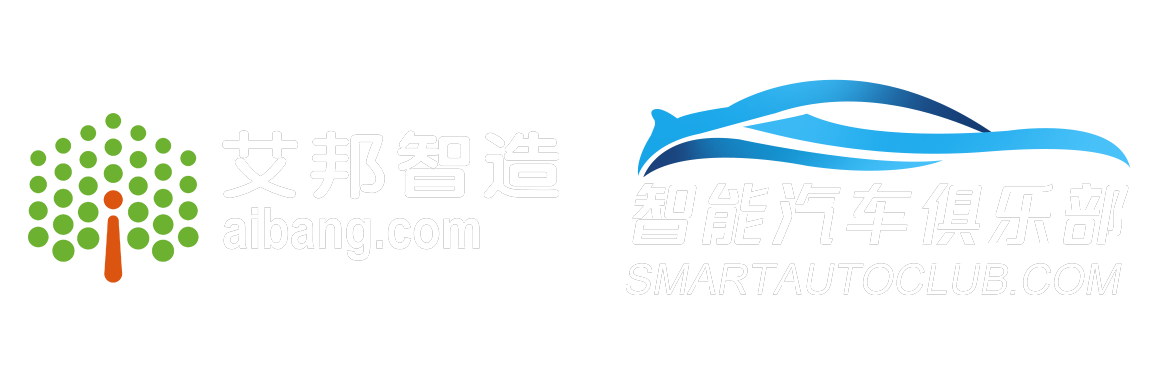文章来源facecar 公众号
P-HUD(Panoramic Head-Up Display,全景抬头显示)技术在2025年迎来了从概念验证走向规模化量产的关键转折。以小米、宝马等厂商为代表的先行者,已将P-HUD搭载于其最新或即将亮相的车型上,引领了智能座舱交互的新浪潮。
P-HUD通过将超宽幅的虚拟图像投射至前挡风玻璃下沿的特殊涂层区域,实现了仪表信息与驾驶环境的深度融合,被视为提升驾驶安全、重塑座舱体验的创新技术。这一创新技术的出现,旨在解决传统W-HUD视场角(FOV)小、显示内容有限,以及AR-HUD体积庞大、成本高昂的痛点,提供一种更优的折中乃至超越方案。

现有HUD设备多利用S偏振光生成图像,这种偏振态在大多数设计倾角下能很好地从挡风玻璃表面反射。然而,S偏振光恰好会被偏光太阳镜阻挡,对于佩戴偏光太阳镜的驾驶员来说,HUD的图像即便能看到,也会显得非常暗淡。

传统的挡风玻璃构造是两层玻璃通过粘合剂进行层压。当前的多数HUD设备,其图像从内侧玻璃表面进行反射,然而也同时会从外侧玻璃进行二次反射,造成重影,需要制造商制造PVB粘合剂层呈轻微楔形的挡风玻璃来纠正。
然而,这种解决方案仅适用于身高在一定范围内的驾驶员,身高过高或过矮的驾驶员仍会遇到一定程度的重影问题。此外,对于更大的视场角(FOV),楔形粘合剂的性能并不理想,无法得到充分校正。
而且,每种新的挡风玻璃设计都需要独特的楔形几何结构,这不仅使设计变得复杂,延长了开发迭代周期,还导致最终的制造过程更为繁琐。

WCF是一种弱P偏振光反射体,能透射大部分入射非偏振光,同时反射单一P偏振光图像——该图像在所有条件下(白天 / 夜间、佩戴 / 不佩戴偏光太阳镜)均清晰可见,且不受观察者身高影响。当生成P偏振光的图像生成单元(PGU)与搭载WCF的挡风玻璃配合使用时,即使透过偏光太阳镜,图像仍保持明亮。

P偏振光反射率与可见光透射率(VLT)之间存在反比关系,可通过调整WCF实现不同挡风玻璃的平衡需求。WCF无需PVB楔形结构即可校正重影缺陷。
目前,多家供应商已推出可实际搭载的P-HUD技术方案,以下为具有代表性的技术方案:
* 国际公司技术方案


在CES 2023展会上,大陆集团Scenic View HUD产品首次亮相。
-
模块化设计:采用三块隐藏式投影模组,独特的“黑带反射工艺”(即P-HUD所运用的特殊黑色涂层技术)。多个屏幕隐藏在仪表板下方,且彼此相互连接,车辆制造商能够根据不同车型的需求,为车辆配备数量在2-5个不等的同款显示屏,实现灵活适配。
-
显示技术:采用高效的矩阵背光技术精准控制局部背光的开启或关闭,显著提升对比度和亮度,同时降低功耗。投影距离约为1米,能够作为仪表盘的有效替代和补充,为驾驶者提供更便捷、直观的信息显示。
-
量产计划:预计2026年面向量产车型正式交付。
2. 宝马Panoramic Vision
宝马推出“Panoramic Vision”概念设计,Panoramic Vision能让驾驶员在行驶过程中,几乎不需要调整视线,就能读取到车辆的主要信息,如时速、时间、娱乐系统信息、驾驶辅助系统、导航等。

宝马Panoramic Vision
-
显示逻辑:位于挡风玻璃底部,从A柱到A柱全覆盖,深色区域显示常驻信息,导航与驾驶辅助信息以AR方式呈现。
-
量产时间:计划在2026年新世代车型中全面量产。
3. 马瑞利:黑镜抬头显示

图片展示了黑镜抬头显示方案能够显示的色域
该方案利用玻璃上的黑色丝印区域作为成像区,显示效果不受环境与路面干扰。显示范围可定制,最大可覆盖从A柱到A柱的宽度,实现全路面相应位置的提示功能。
-
性能参数:
动态HDR超过30000:1,借助区域调光HDR技术实现绝对HDR大于1000000:1
色域最高达NTSC 110%
视场角12×2.5度(@1.1m)
眼盒范围1200mm×100mm
-
成本优势:
由于黑色丝印区域有效阻挡阳光直射,避免TFT温度过高,因而允许使用成本更低的车规级TFT,具备显著成本优势
-
体积优化:
整套设备体积小于1L,便于在前舱布置
4. AGC:Black-band Display
日本AGC公司推出的Black-band Display也是一种P-HUD技术方案。

AGC Black-band Display
-
核心技术:P偏振涂层作为第一层涂层,可优化反射率并降低能耗,并提高其在任何条件下的可见性。
-
用户体验:使得驾驶员即使带上偏光太阳镜,也能够十分清晰地看到虚像,解决了传统HUD的痛点。显示范围从“A柱到A柱”,能够承载更丰富的驾驶辅助信息、导航路径和娱乐内容。
* 本土公司技术方案

1. 京东方:双技术路线(44.8英寸9K抬头显示智能座舱和11.98英寸RGBW智能画质P-HUD显示屏)
近期京东方发布了为P-HUD应用设计的创新显示产品:44.8英寸9K抬头显示智能座舱和11.98英寸RGBW智能画质P-HUD显示屏。

京东方44.8英寸9K抬头显示智能座舱
44.8英寸9K抬头显示智能座舱:
采用A柱到A柱的贯穿一体式设计,9K超高分辨率显示屏横跨主副驾位置。通过高亮度Mini LED器件优化、特定角度偏转膜材设计以及Local Dimming技术精准控制2850个独立发光单元,实现了7000nit峰值亮度和百万级对比度。利用极简单次投影光路设计和全局拟合算法,大幅提升投影效率,并对投影图像进行大角度畸变处理,适配挡风玻璃角度,保证图像无畸变,让驾驶员在平视前方时即可获取到清晰准确的信息。
11.98英寸RGBW显示屏:
采用智能画质控制技术,根据W子像素的动态调整,为不同环境光照条件匹配最佳视觉效果。通过领先的屏内环境光感技术ALS,自动识别周围光照强度,在烈日下可将屏幕亮度拉升超40%,确保画面明亮清晰;而在夜间微光环境下则可提供色彩纯净、光线柔和的视觉体验。
采用业界首创的局部感温技术,TFT感温单元均匀分布于显示屏内,独立监测10x10mm面积的温度变化(检测精度可达±2℃),精准捕捉异常升温点,并可配合车辆系统实施区域定点降温,为P-HUD产品高质量稳定运行提供了强有力的技术保障。
2. TCL华星:14.3英寸Micro LED P-HUD
该方案融合Micro LED与LTPS的技术优势,能够实现超高亮度、超高对比度、高色域。

TCL华星14.3英寸超高亮Micro LED PHUD
作为核心技术的“黑带反射”P-HUD系统,采用多镜头阵列与高对比吸光涂层,通过反向投影方式,将丰富的驾驶信息无缝投射到挡风玻璃下方的黑色区域。
MicroLED采用背光技术,结合多区本地调光算法,实现了极高的对比度和色彩饱和度,峰值亮度超过45000nits,感知亮度达12000nits,确保驾驶者在复杂光照条件下仍能清晰读取信息。P-HUD系统的模组化设计支持多屏叠加和定制,满足不同车型和场景的需求。
3. 泽景:Inno·Vision座舱
泽景Inno·Vision座舱通过整合双焦面AR-HUD、P-HUD及CMS,实现了视觉交互的多层次融合与智能化升级。

泽景Inno·Vision座舱
其中,P-HUD使用多个“光机”屏幕投射图像,采用了针对不同位置成员的多眼盒畸变校正技术增强P-HUD显示效果,向全车乘客提供清晰明快的画面,且几乎不受到环境光的影响。
这一技术能够有效降低驾驶员低头频率,减少查看信息导致的视线转移和注意力分散,使驾驶过程更加便捷安全。多个“光机”的组合应用,可在前档下沿显示如语音助手、媒体、天气等个性化信息,结合不同的视觉设计,营造多样化的座舱交互氛围。
4. 德赛西威:高规格显示方案
德赛西威的P-HUD技术方案可展示仪表信息、行车渲染、导航信息、驾驶信息以及娱乐信息等多种内容。

德赛西威P-HUD技术方案
-
显示性能:PPI不低于127,对比度高于100000:1
-
背光技术:采用Local Dimming背光分区,数量达到1056,能够呈现出清晰、细腻且对比度高的显示效果。
-
交互设计:采用贯穿式设计实现无感交互,一体化交互信息抬头即显示,极大提升了使用的便捷性。
写在最后.
P-HUD技术方案目前已形成完整的产业生态。从3M的WCF偏振光技术到各大供应商的差异化产品方案,整个产业链已做好大规模商业化准备。
随着2025-2026年更多搭载P-HUD的车型上市,这一技术有望重新定义主流价位智能汽车的座舱交互体验,成为继大屏中控之后下一个普及的智能座舱核心配置。


长按识别二维码,加入群聊
 欢迎加入艾邦HUD通讯录,目前有2500人,包含各大HUD厂商以及主机厂负责人均已经加入,可以通过点击下方关键词查看
主机厂 自动驾驶 车联网 HUD厂商 HUD初创 TFT影像源 DLP光机 MEMSLSP 芯片 电子元器件 光源 LCD 汽车配件 线路板 玻璃透镜 光学镜面 光学镀膜 光学镀膜设备 光学设计 光波导 匀光片 光扩散膜 高性能塑料 薄膜 功能涂料 吸光材料 散热方案 贴合胶带 胶水 胶粘剂 挡风玻璃 楔形膜 传动机构 AR生成器 AR导航 测试软件 切割机 激光设备 检测设备 设备 其他
欢迎加入艾邦HUD通讯录,目前有2500人,包含各大HUD厂商以及主机厂负责人均已经加入,可以通过点击下方关键词查看
主机厂 自动驾驶 车联网 HUD厂商 HUD初创 TFT影像源 DLP光机 MEMSLSP 芯片 电子元器件 光源 LCD 汽车配件 线路板 玻璃透镜 光学镜面 光学镀膜 光学镀膜设备 光学设计 光波导 匀光片 光扩散膜 高性能塑料 薄膜 功能涂料 吸光材料 散热方案 贴合胶带 胶水 胶粘剂 挡风玻璃 楔形膜 传动机构 AR生成器 AR导航 测试软件 切割机 激光设备 检测设备 设备 其他
资料下载:

